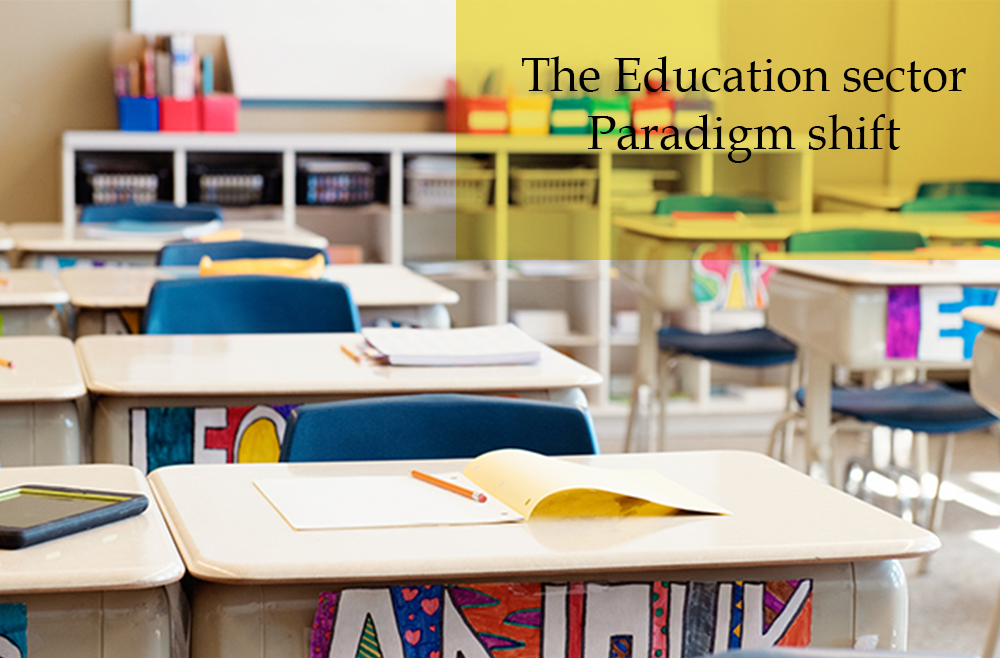In the midst of an unprecedented crisis, it can be hard to see more than a few days into the future. It’s as if you are wandering around in a dense forest at night.
Some commentators are predicting that this will change the way we live. Perhaps, but in what way? We will certainly remember this time for the rest of our lives. At least briefly, we will appreciate the smaller things in life a bit more. But will it really change anything fundamentally, for the long-term? If so, how?
But when people suggest “things will never be the same,” they’re talking about something deeper, about how we live—about our habits, norms, and ways of living. For parents, teachers, and students, it’s possible that some aspects of schooling might not go back to the way they were before.
Schools, Learner Management Changes
With COVID-19, schools are rapidly changing the basic way they do their work. Some have become old-fashioned correspondence schools, with the vast majority of interaction happening by written mail. Others have tried to recreate the school setting online using digital tools like Zoom, moodle elearning, congrea virtual class, BigblueButton Teleconferencing to name but a few. Others are in-between, directing students to online tutoring and practice programs, and posting videos. Most people think that they just want to get things back to normal. That makes sense. After all, the schools didn’t do anything to cause the crisis. So, why change them?
What lessons can we learn from this?
In the current crisis, COVID is forcing parents to be teachers and forcing everyone—students, parents, and teachers—to adapt to online learning tools.
This is not to say that all the online tools are very good. Many are not. But consider the following: Suppose a teacher tries three online tools during the crisis. She likes tool A, dislikes tool B, and is indifferent on tool C. This doesn’t exactly sound like a recipe for mass transformation, does it? Well, actually, if the crisis had never happened, the teacher would never have known about any of these tools and wouldn’t have used B or C anyway. The key is that the teachers (and perhaps students and parents) now want more of A, and that could be transformative.
Third, our adaptations have indirect effects that lead to other changes. The necessary shift due to covid 19 has changed our neighborhoods in ways that were not intended. In the current crisis, the shift to online tools may also have indirect effects.
The potential long-term shifts from COVID-19
Below, I apply the above logic to several policy areas that I’ve seen discussed recently in the context of coronavirus. The first two topics—online tools and fully online learning—are the ones that come to mind first. The rest are potential long-term shifts that might fall more into the “indirect” bucket.
Use of online tools? It should be clear from my arguments above that schools will make much greater use of online tools. Most students in the country will soon have laptops and some type of internet access (though the digital divide will remain a significant concern). Teachers are going to like many of the tools out there, and they will have an easier time using them now that students have some experience with them. Online tools can be helpful complements to in-person instruction—instead of a replacement for it—allowing teachers to focus more on engaging students and mentoring them.
A shift to homeschooling and fully virtual instruction? There may be some shift in this direction. Families will get more accustomed to online learning. However, this approach has the significant disadvantage that families have to play the role of class monitor and teacher. Few families want or can afford that, given their work schedules and other responsibilities. Moreover, research consistently suggests that students learn less in fully virtual environments. In-person, teacher-led instruction simply has too many advantages.
A shift to private schools? A key question is: Which schools will respond better to the current crisis? It could be that traditional public schools respond better, meaning they provide better educational services to children and their families. This is possible because they are designed to have greater capacity. They have IT departments and directors facilitating special education, procurement, and more. They benefit from economies of scale and expertise. On the other hand, private schools have fewer rules to follow. With fewer government rules and more limited union contracts, private schools can be more nimble in responding to a crisis.
It’s too early to tell which sector will win out. One recent report suggests that private schools have switched to online instruction more aggressively than traditional public schools.
But if one sector responds better, this will be a meaningful victory, and one that parents will no doubt notice. The schools that respond best can expect more parents to select them, and expect more political support.
Private schools sustainability? Everything above about private schools also applies to private schools with one exception: Private schools are likely to get pummeled financially. With the exception of the small fraction of students attendance, families have to pay tuition. While the middle-class families that attend private schools will not be as hard hit by the COVID-19 economic crisis, everyone will be meaningfully affected. Over the next year, it is likely we will see a large spike in private school closures.
A shift to competency-based learning? Some education experts have argued that this may be the big winner of the current crisis. However, I think that’s unlikely. As with homeschooling, competency-based approaches have severe limits. While they let students learn at their own pace, competency-based approaches atomize learning and rely heavily on standardized tests. Students provide their competency, and can go on to the next topic, only by passing a test. Competency-based learning is “personalized,” in the sense that instruction is adapted based on existing skills, but, again, within the confines of the tests. Some of these are better than others, but I still don’t believe the more competency-based approaches will be the ones teachers and students gravitate toward in the current crisis. Competency-based learning suffers too much from the same problems as high-stakes testing more generally, which has fallen out of favor.
Yes, we will need more competency-based approaches in the short run to determine which students will be promoted to the next grade, given the lost learning time. But a significant long-term shift to online learning seems less likely.
Shifting roles of students, parents, and teachers? A shift to some online tools could shift the role of teachers, making them more like coaches and mentors. They can point students to very good online lectures and then be there to provide guidance and feedback, and to make connections across topics. The roles of students and parents could also shift. Now that they have more places to look, they may be more likely to try and address learning needs on their own. When roles change, everything else can change with it—though in less predictable ways.
One additional indirect effect: The politics of education
Politics is about how we make collective decisions. It involves values and power struggles. In a later post, I will consider how the COVID-19 crisis might (or might not) reshape the politics of education. Could this lead to big changes in public policy that aren’t yet evident? Might we see reductions in national and county regulation? More flexibility for students who choose courses and tools?
The academic calendar for ECD,Primary and High school students has been scrapped for the year 2020, this one change alone has disrupted at minimum 6 to 8 college and university intakes.
What more regulations do you anticipate as we move into the future? share your views.




